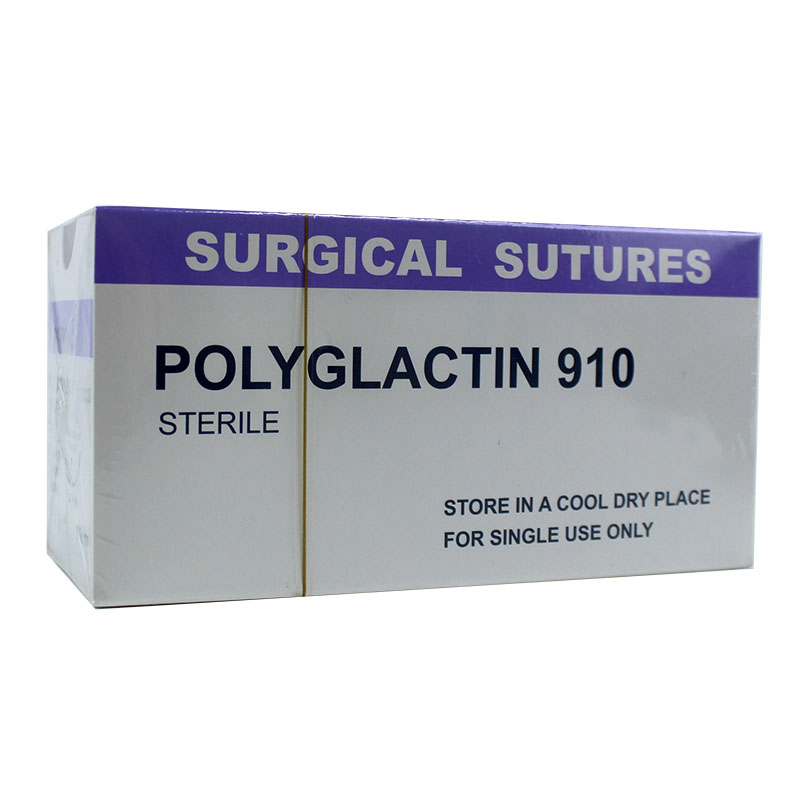Synthetic Absorbable Polyglycolic Acid Suture with Needle
Suture Material
Polyglicolic Acid is coated with polycaprolactone and Calcium Stearate in the following approximate percentages:
| Polyglicolic Acid | 99% |
| Coating | 1% |
Parameters
| Item | Value |
| Properties | Polyglycolic Acid with Needle |
| Size | 4#, 3#, 2#, 1#, 0#, 2/0, 3/0, 4/0, 5/0, 6/0, 7/0, 8/0 |
| Suture length | 45cm, 60cm, 75cm etc. |
| Needle length | 6.5mm 8mm 12mm 22mm 30mm 35mm 40mm 50mm etc. |
| Needle point type | Taper point, curved cutting, reverse cutting, blunt points, spatula points |
| Suture types | Absorbable |
| Sterilization Method | EO |
Characteristics
High tensile strength.
Braided structure.
Absorption through hydrolysis.
Cilindrical coated multifilament.
Gage within U.S.P./E.P guidelines.
About Needles
Needles are supplied in a variety of sizes, shapes and chord lengths. Surgeons should select the type of needle that, in their experience, is appropriate for the specific procedure and tissue.
The needle shapes are generally classified according to the degree of curvature of the body 5/8, 1/2, 3/8 or 1/4 circle and straight-with taper, cutting, blunt.
In general, the same size of needle may be made from finer gauge wire for use in soft or delicate tissues and from heavier gauge wire for use in tough or fibrosed tissues (the surgeon's choice).
The Major Characteristics of Needles are
● They must be made from high quality stainless steel.
● They resist bending but are processed so that they will tend to bend before breaking.
● Taper points must be sharp and contoured for easy passage into tissues.
● Cutting points or edges must be sharp and free of burrs.
● On most needles, a super-Smooth finish is provided that permits the needle to penetrate and pass through with minimal resistance or drag.
● Ribbed needles—Longitudinal ribs are provided on many needles to increase the stability of the needle to the suture material must be secure so that the needle will not separate from the suture material under normal use.
Indications:
It is indicated in all surgical procedures, where synthetic absorbable sutures are recommended.
These include:General Surgery, Gastroenterology, Gynecology, Obsterrics, Ophthalmic Surgery, Urology, Plastic Surgery, and Orthopedics.









